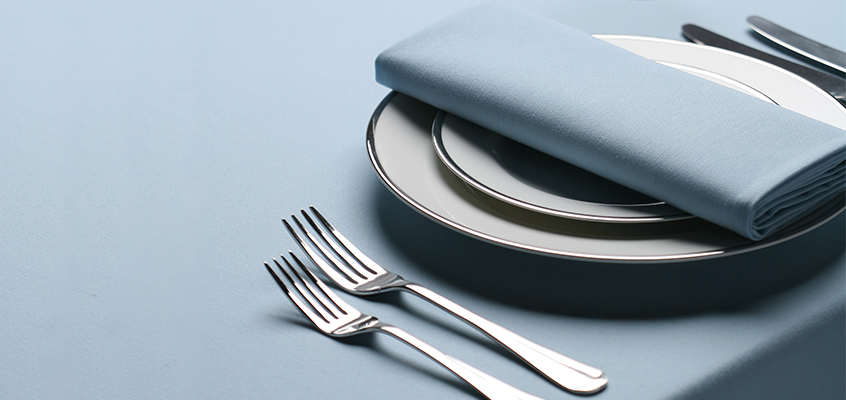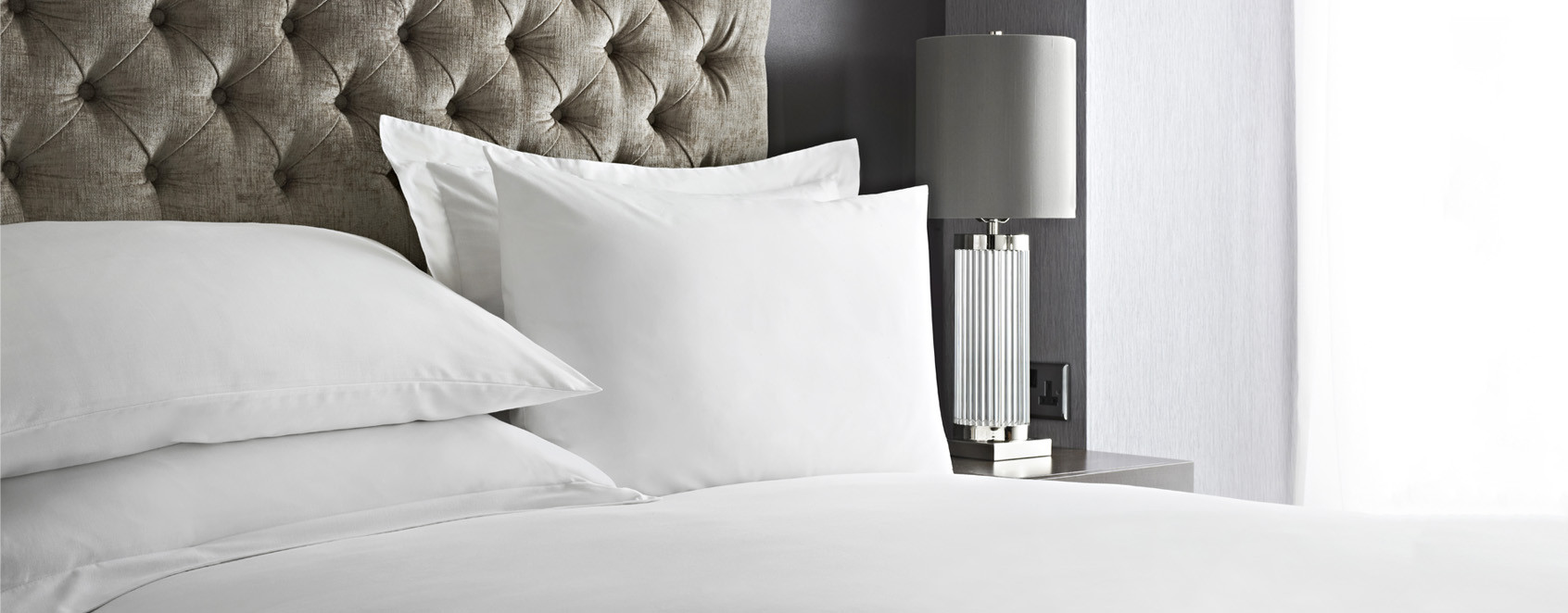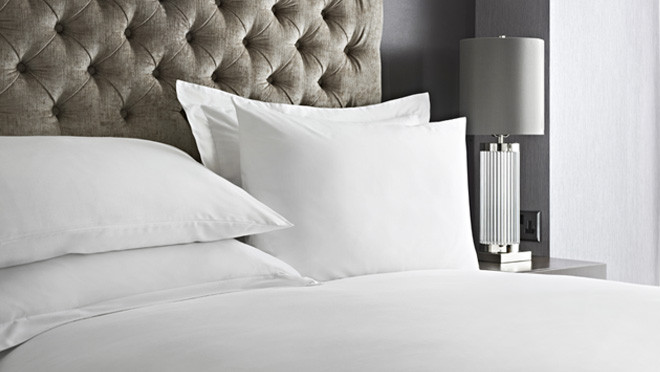We use cookies to make your experience better. To comply with the new e-Privacy directive, we need to ask for your consent to set the cookies. Learn more.
Table Linen Guide
Topics


1. Recommendations For The Wash & Care Of Table Linens
Basic Requirements
- Equipment must be free of sharp edges as they may snag and cause pulls/damage to the tablecloths.
- If using a washing machine with preset programs use a program with cool down.
Washing Equipment must have properly functioning water level and temperature controls. - Powder or chemical feed systems must be functioning properly.
- Detergent must not contain softener.
- Do not use Chlorine bleach on colours only use colour safe oxy. bleaches.
- Drying equipment must have properly functioning temperature and cool-down controls.
- Lint screens on dryers must be cleaned daily.
- Standard operating procedure should include periodic inspections of the above listed requirements.
Processing Requirements: 100% Polyester Table linens
- All new linen should be washed separately prior to use to remove any manufacturing residual dye. Colours and product should not be mixed on this initial wash.
- Subsequent wash cycles, similar colours/shades (e.g. white, medium, dark,) can be washed together (see below).
- All table cloth linen must be shaken out to ensure debris (e.g. food and sharp objects) are not loaded into the washer.
- All polyester tablecloths should be washed separately from 100% cotton and polycotton blends, as loose fibres from cotton and polycotton blends can deposit lint onto the polyester linens.Use synthetic wash cycle/process (maximum 50° C for normal soiling), cool tumble dry, warm iron if required.
- For heavily soiled items, wash temperatures can be increased to a maximum of 60° C but will require a gradual cool down. Step down temperature by 5° C increments or less until load is at 45° C as thermal shock may occur if load is cooled down rapidly.
Typical Wash Program For 100% Polyester Table Linen For Semi Industrial Washing Machines
- Load washers up to 80% of rated capacity.
- Avoid use of any softeners or bacteria stats in the wash as these will mask the absorbency of the fabric.
- Do not use chlorine bleach on coloured table linen, only use oxygen release bleach.
- The use of sours will assist the removal of residual chemicals and assist any starching required. Do not use P.V.A. starch; only use natural starch.
- For heavily soiled items, wash temperatures can be increased to a maximum of 60° C but will require a gradual cool down. Step down temperature by 5° C increments or less until load is at 45° C as thermal shock may occur if load is cooled down to rapidly.
Suggested Drying Procedure
- Load dryers up to 50% capacity.
- Set heat cycle to fabric temperature of 80° C - 90° C (low setting).
- Linen must be dry before “cool-down” cycle starts. Drying time usually varies between 10 and 20 minutes, depending on extraction, load size and temperature.
- These procedures should be followed to obtain optimum flat-dry results; A.) All fabrics should be unloaded immediately after cycle is completed. Cloths should then be draped across a trolley or folding table, napkins stacked flat. B.) Allow 24 hour “shelf-time” to enhance flat-dry appearance.
- Professional results are best obtained by ironing.
2. Stain removal for White and Coloured Table Linen
For White
- Increase the washing temperature. If you are washing at less than 50 degrees C then increase up to 60 degrees C wash cycle. This will usually fix most issues.
- If the staining persists, they can add a bleaching agent or a stain remover, such as vanish, to the wash. Bleach will not affect the fabric.
- A higher wash temperature of 70 to 80 degrees can also be used. This will not damage the fabric but it can lead to thermal shock ( creasing ) if the hot fabric is then dosed with cold rinsing water. If this happens, the fabric will need to be washed again at a lower temperature to remove the creasing.
- Do not use fabric softeners. These can be a cause of locking in stains and will also affect the absorbency of the fabric.
For Colours
- Increase the washing temperature. If you are washing at less than 50 degrees C then increase up to 60 degrees C wash cycle. This will usually fix most issues.
- Do not use any type of bleaching agent or stain remover on colours. This will discolour the fabric and it cannot be remedied.
- A higher wash temperature of 70 to 80 degrees can also be used. This will not damage the fabric but it can lead to thermal shock ( creasing ) if the hot fabric is then dosed with cold rinsing water. If this happens, the fabric will need to be washed again at a lower temperature to remove the creasing.
- Do not use fabric softeners. These can be a cause of locking in stains and will also affect the absorbency of the fabric.
Specific Stains
- Wine, Sauces, Vinegar, Ink, Fruit stains - use a full 60 degree wash and standard detergent.
- Tough Curry Stains - increase the temperature up to 70, 80 and then 90 degrees. Add extra detergent, if a white only product, you can add a small amoutn of bleach.
- Blood - Use a warm water flush, then normal washing. Do not use hot water on protein soils.
- Fats / Corn Oil / Salad Dressing - Use solvated surfactants to boost the regular formula.
- Motor Oil / Grease - Use solvated surfactants to boost regular formula.
- Lipstick / Candle Wax - Use solvated surfactants and/or higher temperatures.
- Rust - Use an oxalic acid prewash or rush-removing sours.
- Mildew - Use chlorine bleach on whites. As a last resort, use 1% available chlorine bleach at 1-2 quarts/CWT to remove mildew from coloured napery. This will cause some colour deterioration. A mildewcide with no quaternary ammonium base should be used to minimize mildew growth.
3. Benefits of Revolutionary Cotton Soft Table Linen Range
With unique Softouch technology revolutionary cotton soft table linen ranges provides a soft, natural ‘cotton like’ feel, while being one of the most durable table cloths in the world.
Specially designed fibres combine with new technology finishing to produce this unsurpassed product which offers superior durability, excellent colour retention and superb stain release, along with minimal shrinkage and outstanding absorbency.
Cost Savings:-
- Excellent stain release enables lower wash temperatures with less rinsing and chemicals required
- Quicker turn around in the laundry as retains less moisture after washing
Reduced fuel and energy costs due to ease of washing and drying - Improved Return on Investment
- Minimal shrinkage – less than 2% compared to up to 10% with 100% cotton
- Good resistance to snags and picks
- Consistent shape retention after continued washing
- Consistent colour wash after wash
Whole Life Costs:-
- Minimal increase in unit price
- Substantial increase in product life
- Reduced cost per use
Satisfied Customers:-
- Highly absorbent, soaks up spills quickly
- Fantastic ‘cotton soft’ feel – napkins are hemmed to further replicate the cotton appearance and handle
- Washing at lower temperatures with less chemicals and rinsing helps protect the environment whilst maintaining a consistently excellent appearance
4. Napkin Folding Videos
6. Glossary of Textile Terms
Click here for our helpful glossary of textile industry terms.
7. Size Guide
Click here to view our table linen size guide.


